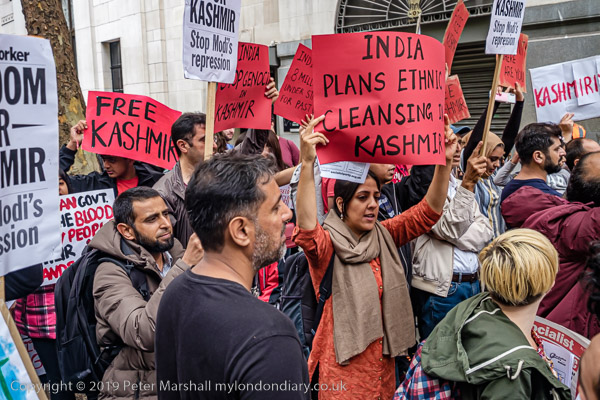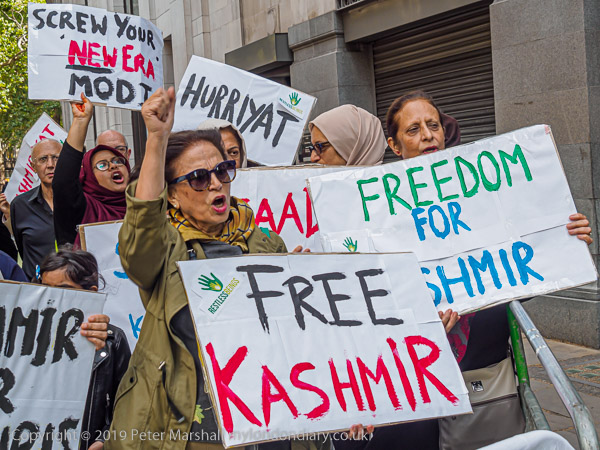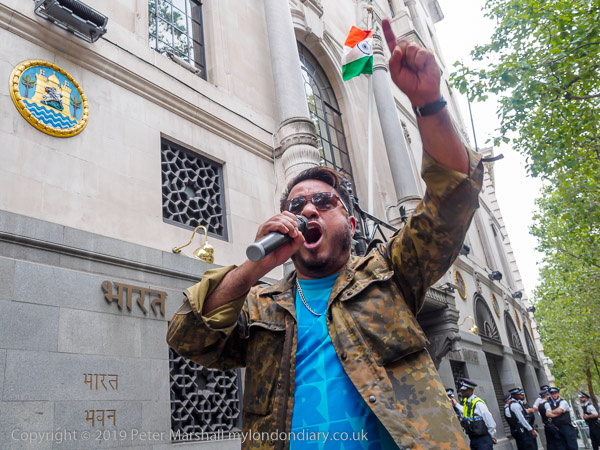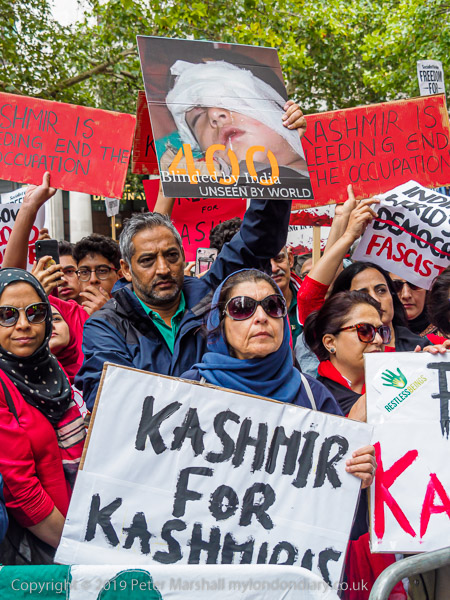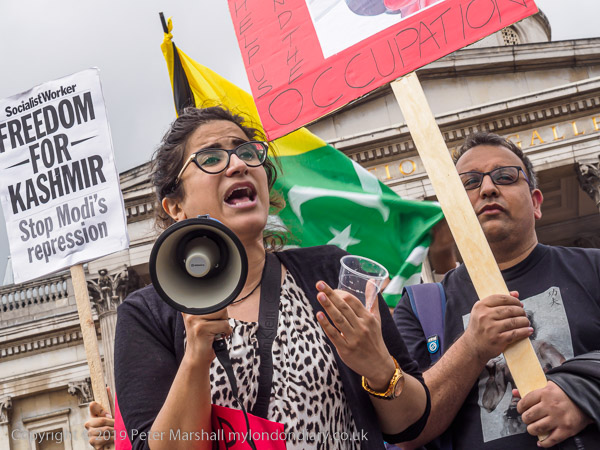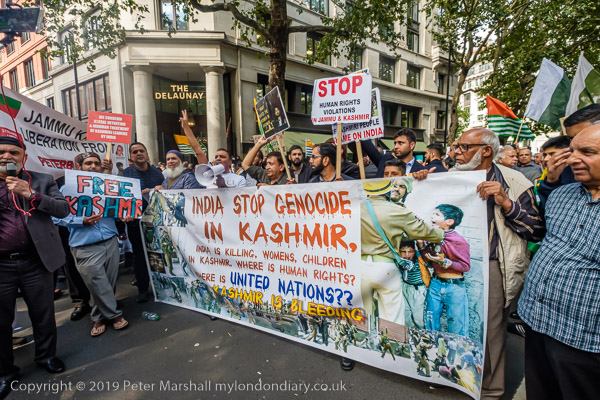
Indian Independence Day, August 15th, saw a much larger protest at the Indian High Commission against Prime Minister Modi’s revocation of Article 370 of the Indian Constitution and calling for freedom for Kashmir. The protesters call the 15th August 1947 ‘Black Day’ .
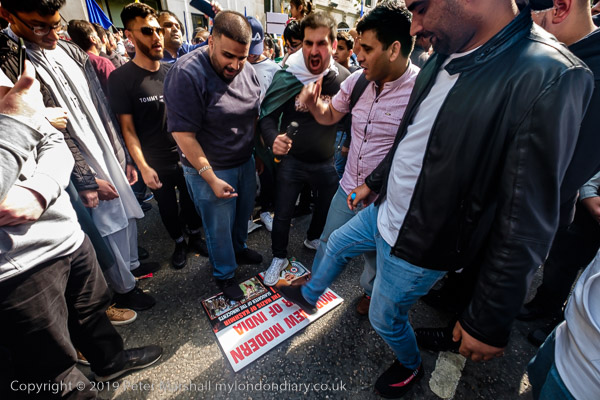
The size of the protest became evident long before I reached the protest as Waterloo Bridge was closed to traffic and I had to walk across. Aldwych was packed with people and it was difficult to get close to the High Commission, where police and police horses faced the crowd behind barriers.
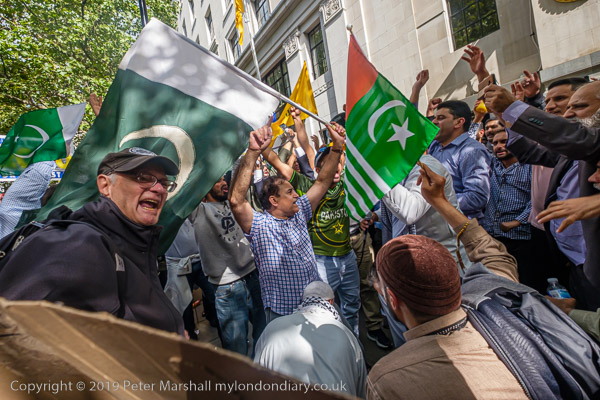
A lot of noise was coming from India Place at the west side of the building, but it was impossible to get there for the crush of protesters and a solid wall of police blocking the way. Later I heard from a colleague who had been there and who had got sprayed with fake blood which protesters threw at the building and I was pleased to have missed this.
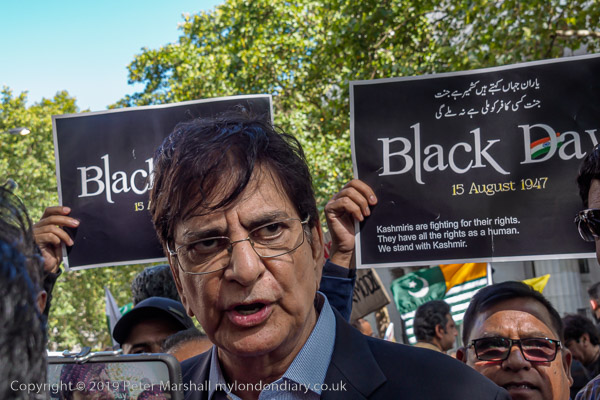
On Aldwych the protest was made up of a number of clearly separate groups, some rather noisier than others. As well as those representing the Indian occupied Jammu and Kashmir, there were also Pakistanis, including some from Azad Kashmir, the Pakistan administered region of Kashmir. Among them I met Sahibzada A Jahangir, spokesman to the Prime Minister of Pakistan.
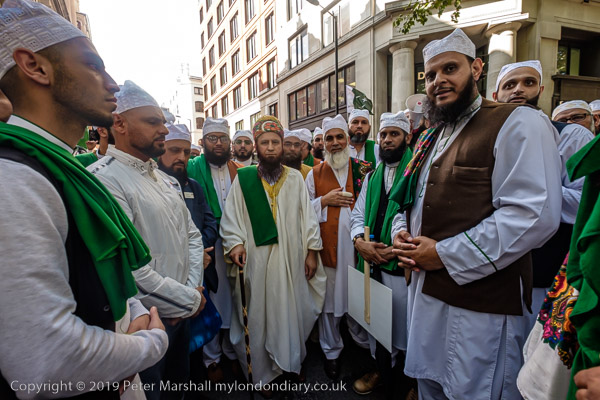
Later after the protest in Aldwych there was another protest in Trafalgar Square where differences between the various groups emerged more clearly. While the Kashmiris from the Indian occupied area are calling for an independent Kashmir, the position of Pakistan is a little unclear, with some from the Pakistan administered area supporting independence and other calling for the integration of the whole country into mainland Pakistan, with possibly the small area long under Chinese occupation being officially ceded to China.
More about both protests:
Kashmir Indian Independence Day Protest
Stand with Kashmir
All photographs on this and my other sites, unless otherwise stated, are taken by and copyright of Peter Marshall, and are available for reproduction or can be bought as prints.
There are no adverts on this site and it receives no sponsorship, and I like to keep it that way. But it does take a considerable amount of my time and thought, and if you enjoy reading it, please share on social media.
And small donations via Paypal – perhaps the cost of a beer – would be appreciated.
